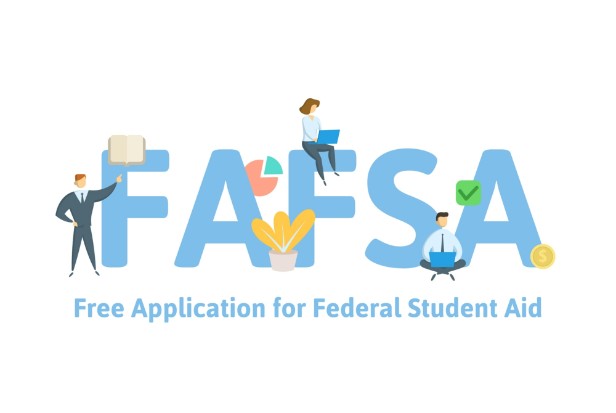
In this article, we’re going to explain how to access the student aid reports on FAFSA, as well as what the SAR is, what’s on it, and why you might need it.
The data you supply on the Free Application for Federal Student Aid (FAFSA) is compiled in your Student Aid Report (SAR).
If you have any issues with your FAFSA, these would be indicated on your SAR under “WHAT YOU MUST DO NOW.” Please follow these instructions to view or print your SAR.
Table of Contents
How Do I View My Student Aid Report (SAR)?
If you (the student) have an FSA ID (account username and password), you can view your SAR by
- selecting “Log In” on the FAFSA home page
- entering your FSA ID; and
- selecting the student role on the “Roles” page; and
- selecting “View SAR” on the “My FAFSA” page.
If you provided an email address on your Free Application for Federal Student Aid (FAFSA®) form, you’ll receive an email with a link to an online copy of your SAR.
Within two weeks of submitting your FAFSA form, you should be able to access your SAR. Find out what to do if your SAR wasn’t delivered to you within two weeks.
You’ll receive either a SAR or a SAR Acknowledgement via postal mail if
- you didn’t provide a valid email address on your FAFSA form,
- the Social Security number you included in your FAFSA form didn’t match the one on file for you with the Social Security Administration, or
- you did not sign your FAFSA form.
Reminder: A financial aid offer is not contained in your SAR. A financial aid offer specifies the exact amount of financial aid you are qualified to receive at a specific college or career school, in contrast to the SAR, which only offers broad estimates of your eligibility for federal student aid. Most schools won’t send you a financial aid offer until after they’ve decided to admit you.

What is a Student Aid Report?
You will receive the Student Aid Report (SAR) after submitting your Free Application for Federal Student Aid (FAFSA). In relation to your FAFSA and eligibility for federal aid, it contains a ton of crucial information.
Following the government’s processing of your FAFSA, a SAR is then forwarded to you and the schools of your choice. Your aid package is put together by schools using the information on it.
Below, we’ll break down the sections you need to know about:
Data Release Number
The Department of Education (ED) will assign a 4-digit number to your FAFSA as your data release number, or DRN.
Your DRN appears on the FAFSA confirmation page once you complete and submit the application.
Additionally, it will show up in the top-right portion of your SAR.
If you ever need to modify your FAFSA, it’s critical to understand your DRN. Only the financial aid office at your school or the FAFSA customer service representatives should have access to it, so keep it confidential.
By giving it to them, you give them permission to access your FAFSA data and make the necessary corrections.
Expected Family Contribution
Your expected family contribution (EFC) is a figure that the government determines using the financial data you and your family provided on the FAFSA.
Your family’s potential contribution is taken into consideration to estimate your financial need, regardless of how much money your parents actually pay for your college.
The ED may use your funds rather than your parents’ if you are deemed an independent student.
Your EFC is used by the colleges you select on your FAFSA to determine your overall financial aid award. Your total financial needs are calculated at each school by deducting your EFC from the cost of attendance.
The Student Aid Index, or SAI, will replace the EFC as of July 2023 as a result of the FAFSA Simplification Act.
Most of the change is merely symbolic. In spite of this, the SAI will be able to fall as low as -$1,500. Your financial need should be more accurately reflected as a result of this.
FAFSA Information
All of your FAFSA data is included in the SAR for record-keeping and to give schools a more complete picture of your financial situation.
Additionally, you can use the SAR to check your responses a second time and, if necessary, fix any mistakes.
Pell Grant Eligibility
Federal grants called Pell Grants are given out by the ED to low-income students. Your SAR will let you know whether you qualify for a Pell Grant and how much, if so.
Your maximum Pell Grant income for the aid year 2020–2021, is $6,495.
Outstanding Federal Loans
Your SAR will list all of the federal student loans you have outstanding if you have previously taken out federal loans.
By doing so, you can continue to be conscious of the amount of debt you already owe, which is crucial when deciding whether or not to apply for additional student loans this year.
Verification Selection
There is a chance the ED will choose your FAFSA for verification. This indicates that they require you to submit additional evidence to support the accuracy of certain information on your FAFSA.
If you are selected, your EFC number will have an asterisk next to it on your SAR.
Don’t worry; being chosen for verification doesn’t always indicate that you’re in trouble, so don’t assume they’re accusing you of lying.
But you need to start doing something right away. Cooperation and prompt provision of what they require to demonstrate your good faith behavior and help you get the FAFSA stress under control more quickly.
Read more: What Increases Your Total Loan Balance?
When and How Do I Get My SAR?
You ought to get an email with instructions on how to view your SAR online at fafsa.gov if you submitted your FAFSA online and included a working email address.
A SAR Acknowledgement form will be mailed to you if you submitted it online without providing an email address.
A paper SAR should arrive in the mail in three to four weeks if your FAFSA was submitted on paper.
Regardless of the method, you’ll eventually be able to view an online copy of your SAR by logging into the FAFSA with your FSA ID and selecting “View or Print your Student Aid Report (SAR)” near the middle of the “My FAFSA” page.
The Federal Student Aid Information Center can be reached at 1-800-4-FED-AID (1-800-433-3243; TTY for the deaf or hard of hearing 1-800-730-8913) if you would also like to request a paper copy to be sent to you.
What Do I Need My SAR For?
A few primary uses exist for your SAR. They are:
- Updating or correcting FAFSA information
- Editing your list of schools or trying to add more than 10
- Reporting incorrect SAR information
Hold onto SAR for your records even if you don’t need to complete these. You never know when you might need it on hand.
Anyway, let’s take a closer look at each of these applications to see how the SAR is used.
Making FAFSA Corrections Or Updates
You have a chance to make changes if you discovered some mistakes, overlooked some information, or your circumstances changed after submitting your FAFSA.
To make those adjustments, you’ll need your DRN, which can be found on your SAR in the top right corner, just above your EFC.
With that in hand, you can get in touch with FAFSA customer service to make changes. In order to make certain changes, such as updating your phone number, email address, mailing address, and housing plan, you will need to give the representative your DRN.
Adding More Than 10 Schools to the FAFSA
When you initially fill out the FAFSA, you can only add 10 schools.
However, you can amend your FAFSA later and add more than ten schools, or you can simply update your current list.
You will require your DRN from your SAR to do this.
The procedure for adding or deleting schools is the same as updating or correcting your FAFSA; the only difference is that you must also include the school codes for the schools you’re adding.
Reporting Incorrect SAR Information
When you receive your SAR, compare it to the data from your FAFSA to see if anything doesn’t seem right. There is always a chance that some of the data you entered on the FAFSA will be different on your SAR.
You can receive the maximum amount of money to which you are entitled by making sure your information is accurate.
Why Your SAR is Important
Your financial aid awards will depend on the information on your student aid report, so accuracy is crucial. With your family, go over it carefully and contrast the data listed with a copy of your FAFSA®. Your financial aid package will be based on your EFC as reported on your student aid report.
Use the Information Review Form on the back of the SAR or go to the official FAFSA website to make any corrections you believe are necessary to the information on your report.
Conclusion: Access Student Aid Report on FAFSA
After submitting your Free Application for Federal Student Aid (FAFSA), you will receive a document known as the Student Aid Report or SAR.
If you (the student) have an FSA ID (account username and password), you can view your SAR by
- selecting “Log In” on the FAFSA home page
- entering your FSA ID; and
- selecting the student role on the “Roles” page; and
- selecting “View SAR” on the “My FAFSA” page.

![Best Banks In California Top 11 Picks [2022]](https://www.findmybank.com/wp-content/uploads/2022/11/Best-Banks-In-California-Top-11-Picks-2022.jpg)
